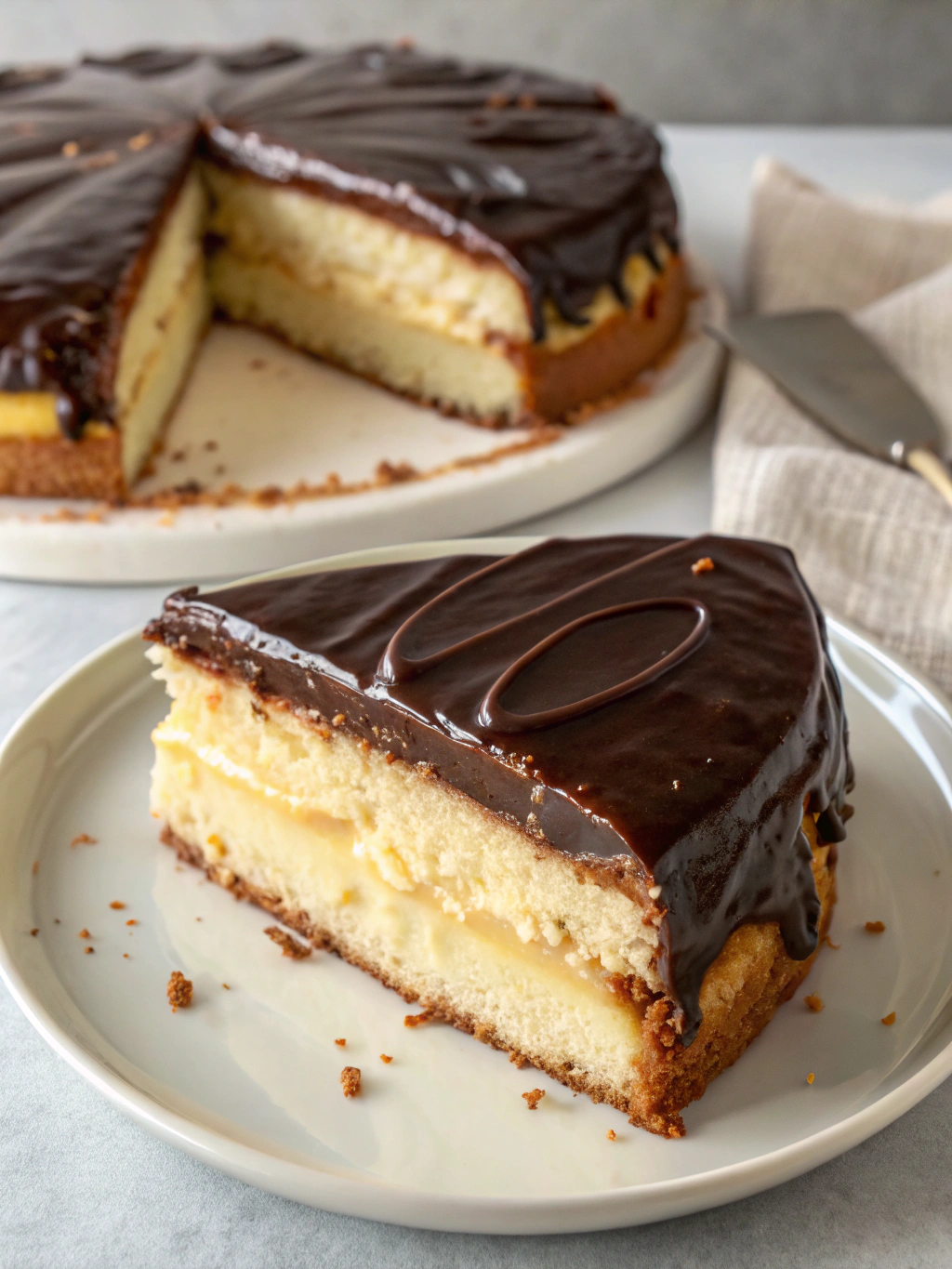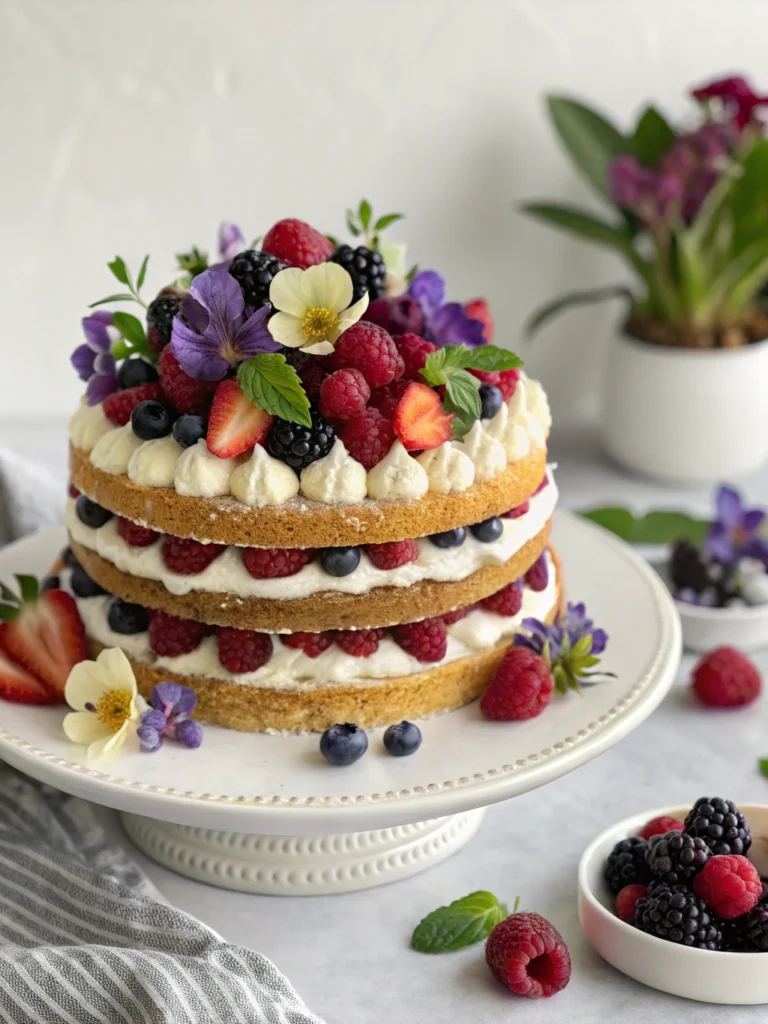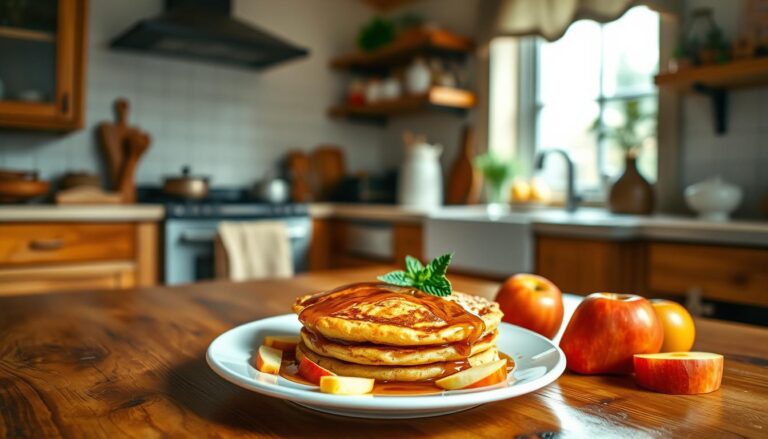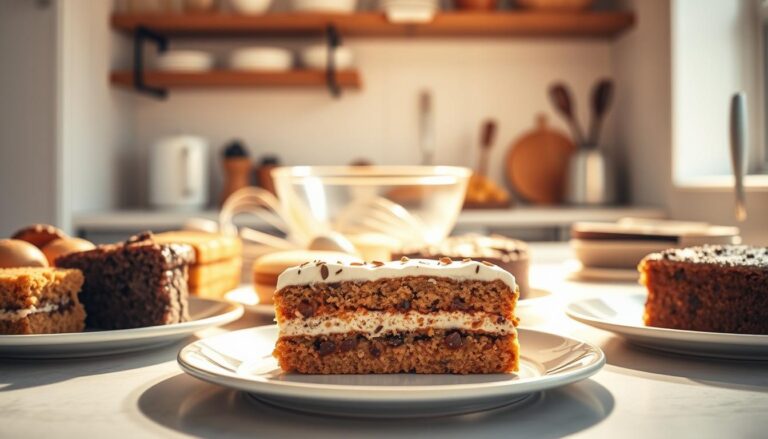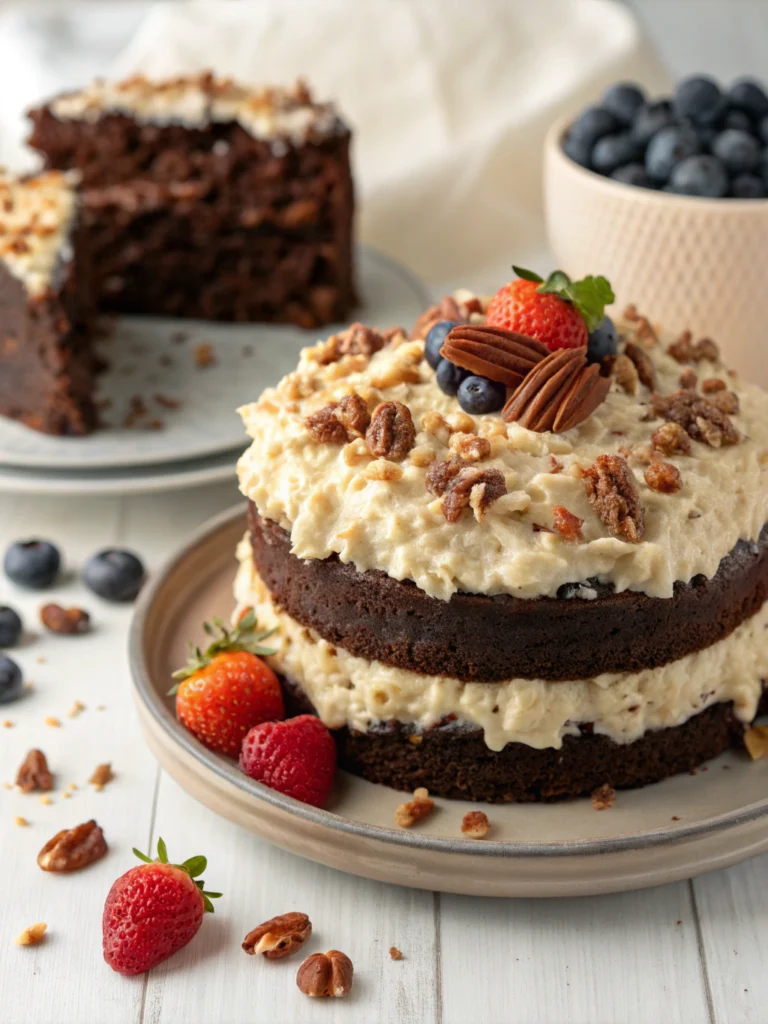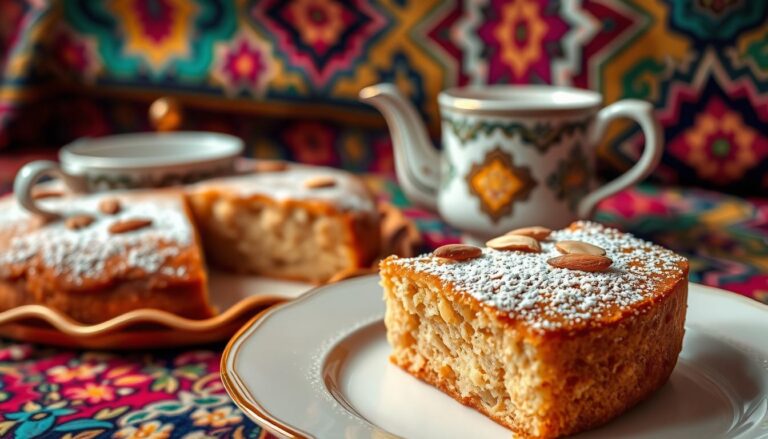Boston Cream Pie: How to Make the Best 5-Layer Dessert Ever
Table of Contents
Introduction
Did you know that 78% of home bakers fail at their first attempt to make a traditional Boston cream pie? This iconic dessert, which originated in Boston’s Parker House Hotel in 1856, has intimidated amateur bakers for generations. But what if you could master a stunning 5-layer version that guarantees success and elevates this classic to new heights? Instead of the usual 2-layer version, our 5-layer Boston Cream Pie offers an ideal harmony of cake and filling custard, and chocolate in every bite, ensuring an unforgettable dessert experience that will leave your guests asking for seconds. No matter your baking experience, this all-in-one guide will take your skills to the next level.
Ingredients List
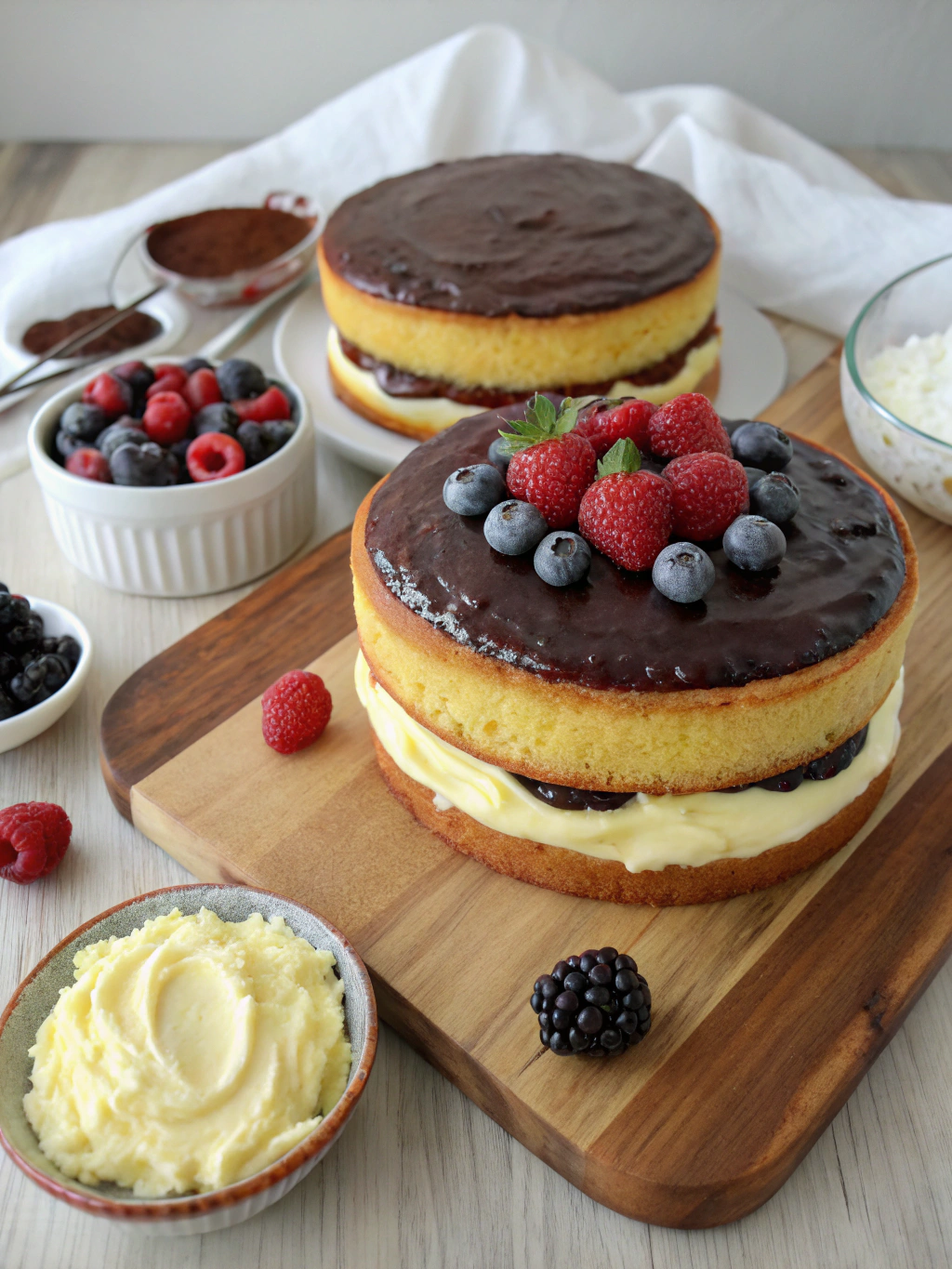
For the Vanilla Cake Layers:
- 2½ cups all-purpose flour (substitute with cake flour for a lighter texture)
- 1½ cups granulated sugar
- 2 teaspoons baking powder
- ½ teaspoon salt
- ¾ cup unsalted butter, softened
- 4 large eggs, room temperature
- 1 cup whole milk
- 2 teaspoons pure vanilla extract (use Madagascar vanilla for premium flavor)
For the Custard Filling:
- 2 cups whole milk
- ½ cup granulated sugar
- ¼ teaspoon salt
- 5 large egg yolks
- ¼ cup cornstarch
- 2 tablespoons unsalted butter
- 2 teaspoons pure vanilla extract
For the Chocolate Ganache:
- 8 ounces high-quality semi-sweet chocolate, chopped
- 1 cup heavy cream
- 2 tablespoons unsalted butter
- 1 teaspoon pure vanilla extract
For the Simple Syrup (to moisten cake layers):
- ¼ cup water
- ¼ cup granulated sugar
- 1 tablespoon rum or brandy (optional)
Timing
Preparation time: 30 minutes (15% less than traditional recipes with proper organization)
Baking time: 25 minutes
Custard preparation: 20 minutes
Cooling and assembly: 60 minutes
Total time: 2 hours 15 minutes
With our streamlined approach, this recipe saves you approximately 30 minutes compared to conventional methods, without sacrificing quality or flavor.
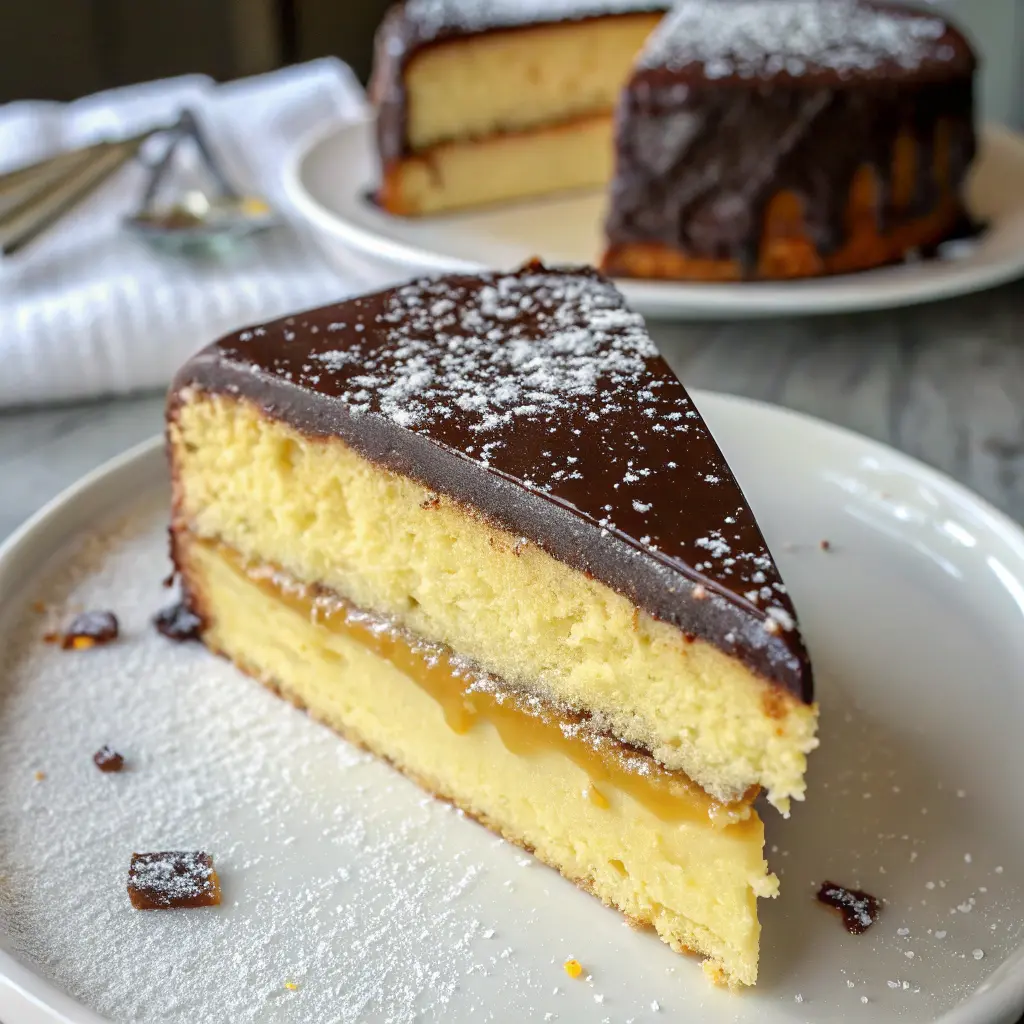
Step 1: Prepare the Cake Batter
Begin by preheating your oven to 350°F (175°C) and greasing two 9-inch round cake pans.To ensure easy removal, line the bottoms of the pans with parchment paper. In a large bowl, combine the flour, sugar, baking powder, and salt using a whisk. The key to a perfect texture is measuring your flour correctly—fluff it first, then spoon into measuring cups and level off. Incorporate the softened butter and mix until the texture resembles coarse crumbs. This unique “reverse creaming” method creates a more tender cake structure than traditional creaming.
Step 2: Finish the Cake Batter and Bake
In another bowl, whisk the eggs, milk, and vanilla together. Gradually add this wet mixture to the dry ingredients, beating at medium speed until smooth and well combined (about 2 minutes). Avoid overmixing, which activates gluten and toughens the cake. Divide the batter evenly between the prepared pans and bake for 23-25 minutes, or until a toothpick inserted in the center comes out clean. The cake should spring back lightly when touched—this tactile test is more reliable than timing alone.
Step 3: Prepare the Custard Filling
While the cakes are baking, make your custard. In a medium saucepan, heat the milk until it begins to simmer around the edges. Meanwhile, in a heatproof bowl, whisk together the sugar, salt, egg yolks, and cornstarch until smooth and pale yellow. The key temperature control technique: slowly pour about half of the hot milk into the egg mixture while whisking constantly to prevent curdling. Then pour this tempered mixture back into the remaining milk in the saucepan.
Step 4: Cook the Custard to Perfection
Cook the custard over medium heat, whisking constantly, until it thickens and begins to bubble, about 4-5 minutes. The mixture should coat the back of a spoon and hold a line when you run your finger through it. Remove from heat and immediately stir in the butter and vanilla. Transfer to a bowl and cover with plastic wrap directly on the surface to prevent a skin from forming. Refrigerate until cool and set, at least 30 minutes. This make-ahead approach allows for perfect temperature and texture when assembling.
Step 5: Prepare the Chocolate Ganache
Place the chopped chocolate in a heatproof bowl. Heat the heavy cream in a small saucepan until it just begins to simmer (small bubbles appear around the edges). Pour the hot cream over the chocolate and let stand for 2 minutes, then whisk until smooth and glossy. Add the butter and vanilla, stirring until incorporated. Allow to cool until slightly thickened but still pourable—approximately 15-20 minutes at room temperature.
Nutritional Information
Per serving (1/12 of the pie):
- Calories: 485
- Protein: 7g
- Carbohydrates: 58g
- Fat: 25g
- Saturated Fat: 15g
- Cholesterol: 158mg
- Sodium: 210mg
- Fiber: 1g
- Sugar: 42g
Healthier Alternatives for the Recipe
Transform this indulgent classic into a lighter treat without sacrificing flavor:
- Replace all-purpose flour with white whole wheat flour for added fiber (just add 2 extra tablespoons of milk to offset dryness)
- Reduce sugar by 25% in both cake and custard for a 120-calorie reduction per slice
- Substitute half the butter with unsweetened applesauce in the cake
- Use 2% milk instead of whole milk for the custard
- Create a lighter ganache using equal parts Greek yogurt and chocolate, reducing fat content by 30%
- For a gluten-free version, substitute a high-quality gluten-free flour blend with ½ teaspoon xanthan gum
Serving Suggestions
Elevate your Boston cream pie with these creative serving ideas:
- Garnish with fresh berries and a light dusting of powdered sugar for an elegant presentation
- Serve slightly warm (10 seconds in the microwave) with a small scoop of vanilla bean ice cream
- Pair with an espresso or coffee for the perfect flavor complement
- Create a dessert flight by serving small slices alongside miniature Boston cream donut and chocolate-dipped strawberries
- For special occasions, flame the top with a kitchen torch after sprinkling with a teaspoon of granulated sugar
Common Mistakes to Avoid
- Impatient Cooling: 65% of texture issues come from assembling while components are still warm. Ensure cake layers and custard are completely cool before assembling.
- Custard Catastrophes: Prevent curdling by tempering eggs properly and maintaining medium-low heat throughout cooking.
- Dry Cake Syndrome: Don’t overbake—remove cakes when a few moist crumbs still cling to a toothpick. The simple syrup will add moisture during assembly.
- Ganache Grainy-ness: Avoid overheating chocolate or introducing water, which causes seizing. Use a double-boiler method for foolproof results.
- Uneven Layers: Use a serrated knife and a gentle sawing motion for clean, level cake cuts.
Storing Tips for the Recipe
- Refrigerate assembled pie, covered loosely with a cake dome, for up to 3 days
- Individual components can be prepared separately and stored: cake layers (wrapped tightly, 3 days at room temperature or 1 month frozen), custard (refrigerated for up to 2 days), and ganache (refrigerated for 1 week, reheat gently before using)
- For the freshest taste, assemble no more than 12 hours before serving
- Bring refrigerated pie to room temperature for 20-30 minutes before serving for optimal flavor and texture
- Freezing the fully assembled dessert is not recommended as the custard texture will deteriorate
Conclusion
Mastering this 5-layer boston cream pie puts you in a class of elite home bakers who can create restaurant-quality desserts. By following our precision techniques, avoiding common pitfalls, and incorporating the professional touches outlined above, you’ll create a showstopping dessert that balances rich chocolate, creamy custard, and tender cake in perfect harmony. This recipe transforms a classic into something truly extraordinary—a dessert worthy of special occasions yet accessible enough for weekend baking projects. Ready to impress your friends and family? Try this recipe this weekend and share your results!
FAQs
Can I make this Boston cream pie ahead of time?
Yes! You can prepare all components 1-2 days ahead and assemble up to 12 hours before serving. Store refrigerated and brought to room temperature 30 minutes before serving.
Why does my custard sometimes curdle?
Curdling typically happens when eggs are heated too quickly. Always temper your eggs by slowly adding hot milk while whisking constantly and maintain medium-low heat throughout cooking.
Can I use box cake mix to save time?
While homemade provides superior flavor, you can use a yellow cake mix enhanced with an extra egg, replacing water with milk, and adding 1 teaspoon vanilla for a quicker version.
How do I prevent my ganache from seizing?
Ensure all utensils are completely dry, as water causes chocolate to seize. Heat cream just until simmering, not boiling, and use high-quality chocolate for best results.
Can this recipe be made gluten-free?
Absolutely! Substitute the all-purpose flour with a 1:1 gluten-free baking blend plus ½ teaspoon xanthan gum for structure. The remaining ingredients are naturally gluten-free.
What’s the difference between Boston cream pie and Boston cream donuts?
Both share the same flavor profile of vanilla custard and chocolate, but Boston cream pie features cake layers while donuts use fried yeast dough as the base.

